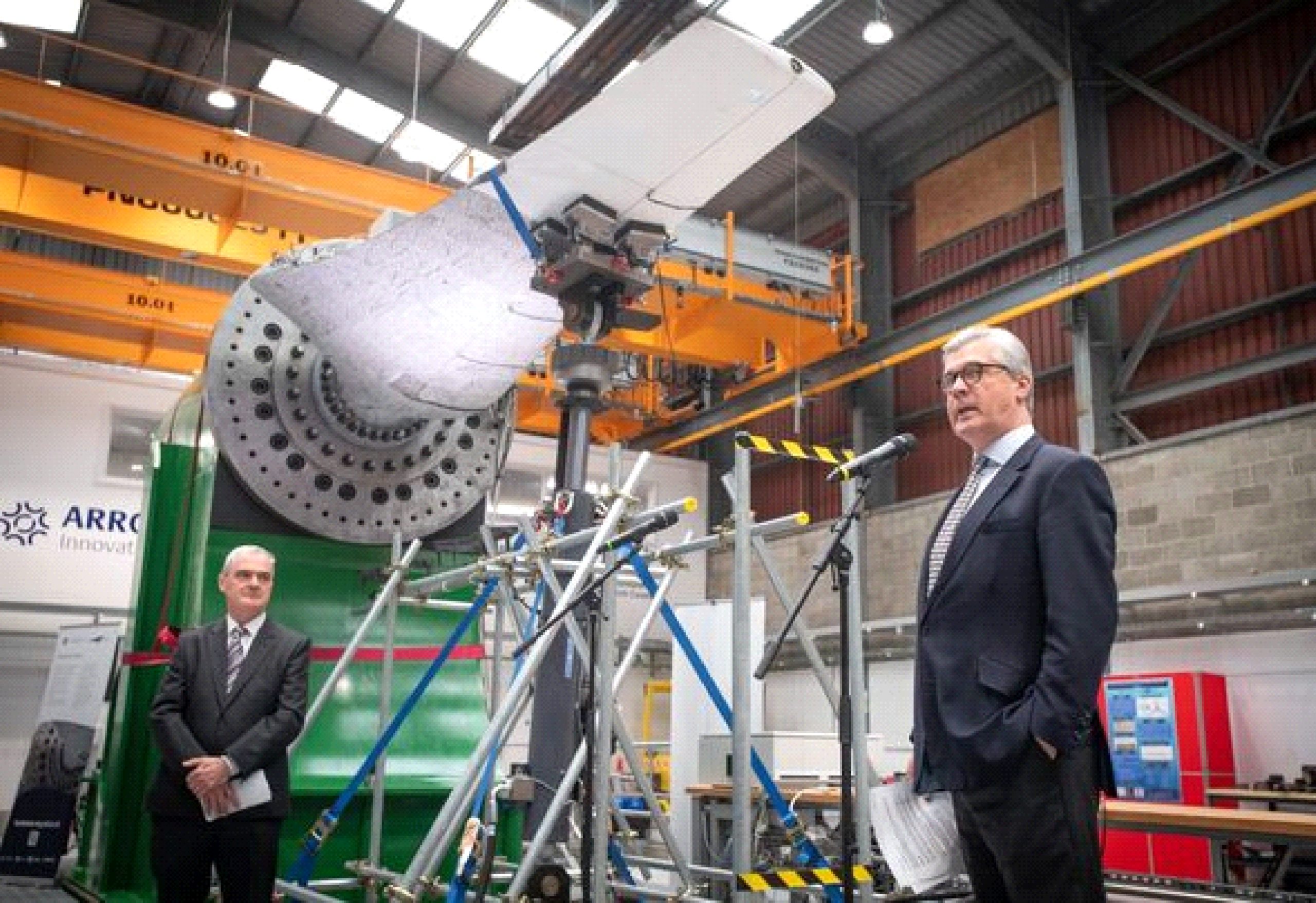By Amtjpmu Ashkemaz
As Europe scrambles to end its reliance on Russian fossil fuel imports, various forms of renewable energy like wind, solar and nuclear energy have been touted as solutions to achieve energy independence, and slash skyrocketing bills. However, British universities are leading the way in the transition, and have set up the world’s first test facility that will study turbines that could one day be used to harness tidal and wave energy. Babcock International, the University of Edinburgh, the University of Strathclyde, Fife College, Fife Council and Scottish Enterprise and Skills Development Scotland joined forces to develop the Arroll Gibb Innovation Campus (AGIC).
Based in Rosyth, Fife, the £4.6million facility was officially opened on Friday by Scotland Minister Malcolm Offord.
It aims to serve a range of small to medium-sized enterprises in the marine, nuclear and energy-transition sectors by offering access to the latest industrial techniques and technology, industrial and office space, innovation advice and skills development.
Speaking, Professor Conchúr Ó Brádaigh, Head of the School of Engineering at the University of Edinburgh, described the potential of one of the first modules that the campus is developing.
He said: “There are three to five different modules of the campus that we’re trying to develop.
“The first one that we’re developing is a test facility called FastBlade, which will be the world’s first dedicated structural fatigue test facility aimed at tidal turbine blades.
“In the last few years, the technological readies of the tidal energy sector has increased enormously, so now we have some of our commercialisation partners, such as orbital marine power and several more.
“All of these companies have megawatt-scale turbines, which they are ready to commercialise.”
Professor Ó Brádaigh believes that the turbines his team is developing could be four times more efficient than current turbines that are being tested for tidal and wave energy.
However, he also noted that despite its “enormous potential”, wave energy still has a long way to go before its commercially viable.
Tidal energy, however, is a lot closer to that stage as they “have the advantage that they’re just like wind energy, they directly capture the flow in the current”.
He added: “The big advantage of tidal energy is that its entirely predictable If you can the tidal flow for six months, you can predict it forever.
“That’s a great advantage on wind energy for utilities, because they can predict exactly when the tidal energy will be generated.”
Prof Ó Brádaigh also noted that the coastline on the European continent has massive potential for harnessing tidal energy, which could even end the EU’s reliance on Russia.
Express.co.uk
